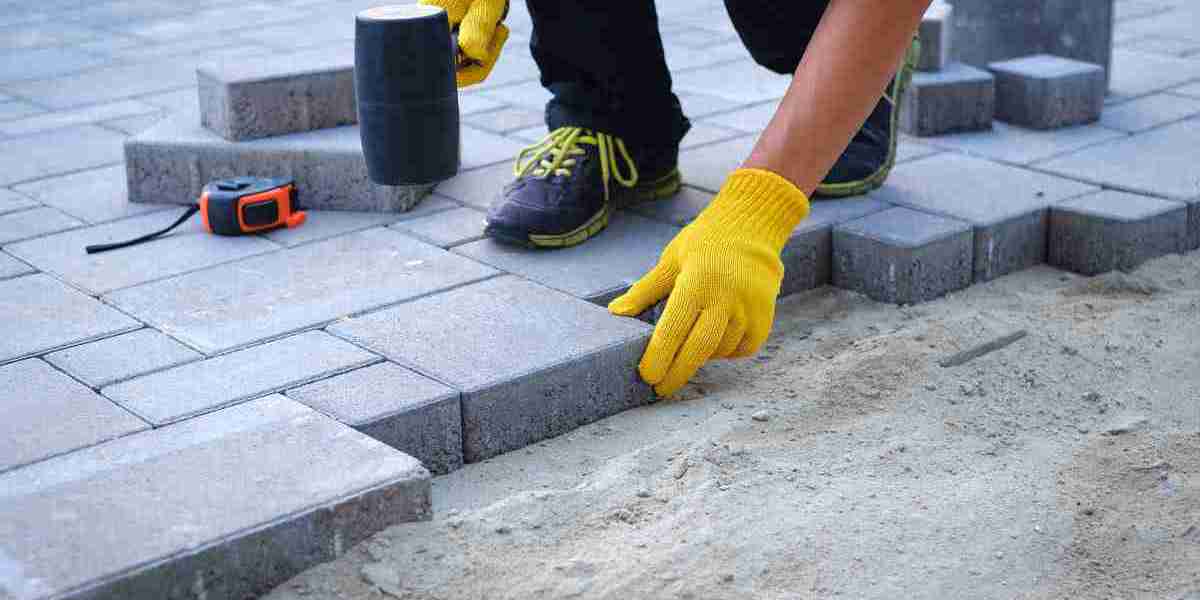Commercial concrete paving is an essential element of infrastructure in urban and industrial settings. It involves the use of concrete for the construction of large-scale projects like parking lots, sidewalks, driveways, and roadways, catering to commercial needs.
This article delves into the significance, benefits, process, and maintenance of commercial concrete paving, offering insights for businesses looking to invest in durable and reliable paving solutions.
The Importance of Commercial Concrete Paving
Commercial concrete paving plays a pivotal role in the infrastructure of urban and industrial environments. It provides a sturdy and long-lasting surface capable of enduring heavy traffic, harsh weather conditions, and the demands of daily business operations.
This durability is particularly crucial for businesses that depend on frequent transportation, such as warehouses, retail centers, and office complexes.
Moreover, concrete paving contributes to the safety and accessibility of commercial spaces. Well-paved surfaces reduce the risk of accidents caused by uneven or deteriorating ground, ensuring that vehicles and pedestrians can move safely.
This reliability is not only a matter of convenience but also a legal requirement for businesses to maintain safe premises, avoiding potential liabilities.
Benefits of Commercial Concrete Paving
The use of concrete in commercial paving projects offers several significant advantages:
Durability and Longevity: Concrete is renowned for its strength and ability to withstand substantial weight and pressure, making it ideal for commercial applications. When properly installed and maintained, concrete pavements can last for decades without significant degradation, offering a long-term return on investment.
Low Maintenance: Compared to other paving materials, concrete requires relatively low maintenance. While regular cleaning and occasional sealing are recommended, the material does not need frequent repairs or resurfacing, reducing overall maintenance costs.
Sustainability: Concrete is an environmentally friendly choice for paving. It is made from natural materials like limestone, sand, and water, and is fully recyclable. Additionally, concrete's light color reflects more sunlight than darker materials like asphalt, contributing to cooler surface temperatures and reducing the urban heat island effect.
Versatility: Concrete can be tailored to meet the specific needs of various commercial projects. It can be poured into different shapes and forms, textured to improve traction, or colored to enhance aesthetic appeal. This versatility allows businesses to customize their paving to align with their branding or functional requirements.
Cost-Effectiveness: While the initial cost of concrete paving may be higher than other materials like asphalt, its durability and low maintenance needs make it a cost-effective option in the long run. The extended lifespan of concrete means fewer replacements and repairs, translating into savings over time.
The Process of Commercial Concrete Paving
Commercial concrete paving involves several key steps to ensure a successful and durable outcome:
Site Preparation: The process begins with thorough site preparation. This includes clearing the area of any debris, vegetation, and existing structures. The ground is then excavated and graded to create a stable base, ensuring proper drainage and preventing future issues like water pooling or erosion.
Subgrade and Base Layer Installation: After grading, a subgrade is prepared by compacting the soil to provide a solid foundation. A base layer, typically composed of crushed stone or gravel, is then laid over the subgrade. This base layer further enhances the stability of the pavement and aids in drainage.
Formwork and Reinforcement: Once the base layer is in place, formwork is set up to outline the shape and boundaries of the concrete pavement. Steel reinforcement, such as rebar or wire mesh, is often added to the formwork to increase the tensile strength of the concrete, preventing cracking under heavy loads.
Concrete Pouring and Finishing: The concrete mix is then poured into the prepared forms, ensuring it is evenly spread and compacted to eliminate air pockets. The surface is smoothed using trowels, and control joints are cut into the concrete to allow for expansion and contraction, which helps prevent cracking. Depending on the project, the surface can also be textured or colored at this stage.
Curing: After the concrete is poured and finished, it must cure properly to achieve its maximum strength. Curing involves keeping the concrete moist for several days, allowing the chemical reactions within the mix to complete. This step is crucial for preventing premature drying, which can lead to surface cracks and reduced durability.
Final Inspection and Quality Control: Once the curing process is complete, the pavement undergoes a final inspection to ensure it meets the required specifications and quality standards. Any necessary adjustments or repairs are made before the area is opened for use.
Maintenance of Commercial Concrete Paving
Even though concrete is a low-maintenance material, regular care is essential to maximize its lifespan:
Regular Cleaning: Keeping the surface clean by removing debris, dirt, and stains helps maintain the pavement's appearance and prevents surface degradation. Power washing can be effective for deep cleaning.
Sealing: Applying a sealant every few years protects the concrete from water penetration, chemical spills, and weathering. Sealants can also enhance the color and texture of the pavement, keeping it looking new.
Crack Repair: While concrete is durable, minor cracks can still develop over time due to shifting soil or temperature changes. Promptly repairing these cracks prevents them from expanding and causing more significant damage.
Reinforcement Checks: Periodically inspect the reinforcement, such as rebar, to ensure it remains intact and free from corrosion, which can weaken the structure over time.
Commercial concrete paving is a reliable, durable, and cost-effective solution for businesses looking to enhance their infrastructure.
Its benefits, including longevity, low maintenance, and versatility, make it an excellent choice for a wide range of commercial applications.
By understanding the process and importance of proper maintenance, businesses can ensure their concrete paving investment remains in excellent condition for years to come.














